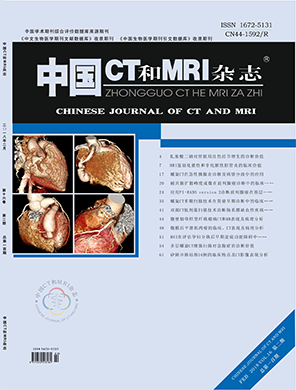Head and Neck Imaging
The Application of Magnetic Resonance Whole Body Diffusion Weighted Imaging in the Diagnosis of Malignant Tumors
Author:WANG Li-hua, GUAN Xia, MENG Lei,et al.
affiliation:Department of MRI Room, Puyang people's hospital, Puyang 457000, Henan Province, China
PDFAbstract
Objective To study the value of magnetic resonance whole body diffusion weighted imaging(WB-DWI) in the diagnosis of malignant tumors. Methods From February 2013 to August 2016, 38 patients with suspected malignant tumors in our hospital were selected as the observation group, and 12 normal healthy volunteers were selected as the control group at the same time. Both groups were examined by WBDWI, and the lesions were examined by conventional magnetic resonance imaging (MRI) within one week. The WB-DWIcharacteristics of the two groups were analyzed. Results Among 38 patients with suspected malignant tumors, there were 30 cases diagnosed with malignant tumors and 8 cases with benign lesions. WB-DWI diagnosed malignant tumors in 29 cases and 1 case was not diagnosed. The sensitivity, specificity, false negative rate, false positive rate the positive predictive value, negative predictive value and the coincidence rate of WB-DWI in the diagnosis of malignant tumors were 93.33%, 87.50%, 12.50%, 6.67%, 96.67%, 77.78% and 92.11%. The maximum mean diffusion coefficient (ADC) value, the minimum mean ADC value and the mean ADC value of benign tumors were significantly higher than those of malignant tumors (P<0.05). Conclusion WB-DWI is of certain clinical value in the screening of tumors in body, and the accuracy in the differential diagnosis of benign and malignant tumors is high. It can help the development of clinical treatment and prolong the survival time of the patients to the maximum extent.
【Keyword】Magnetic Resonance Imaging; Diffusion Weighted Imaging; Malignant Tumor; Diagnosis
【Chart number】R73;R445.2
【Document Identification Number】A
【DOI】 10.3969/j.issn.1672- 5131.2018.02.037
Chinese journal of CT and MRI
th16Volume, th 2 Issue
2018Year02Month

Related articles